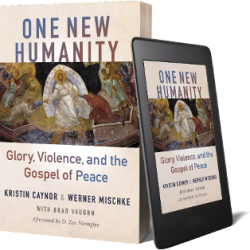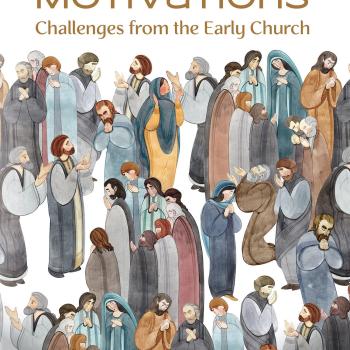Where do you start when sharing the gospel?
The beginning of a story has disproportionate influence on the effect that story has on the listener. It introduces the context, the main characters, key categories of thinking as well as the conflict, which the story will resolve.
I suggest that traditional gospel presentations begin at the wrong place. As a result, we often already lost at the starting line.
This post introduces a series that will not only explain the problem mentioned above; it will offer a solution.
 From Adam to Christ
From Adam to Christ
Some of my criticisms against Creation-to-Christ (C2C) have concerned its opening sections. They overemphasize a few themes in a way that is foreign to the Bible. In so doing, C2C may also miss an opportunity in fact to communicate biblical truth in a more culturally meaningful way.
(To be clear, I have great respect for those who created C2C. I know them personally. My critiques belong to an ongoing dialogue aimed at improving this and similar tools.)
Two specific examples are sufficient for now.
(1) Demons
The early introduction of demons is problematic. The explanation about the fall of angels is largely based on theological speculation based on a few passages, which offer little elaboration. In fact, many (or most) people derive their demonology from Ezekiel 28, which I think Greg Beale rightly argues is most likely about the fall of humanity, not demons! (Cf. Beale, The Temple and the Church’s Mission, 75ff). From the beginning, C2C provides people a very poor example about how to do exegesis.
(Of course, I’m not saying we should never talk about this subject. However, we need not make it the first thing out of our mouth.)
C2C thus does not reflect the wisdom contained within couple of basic principles:
a) Don’t turn something minor into something major.
b) Likewise, do not muddle what is clear with something that is not clear.
(2) Adam
An exorbitant amount of space (relative to the entire story’s length) is spent on the Adam account. This will be the primary focus in this present series of blog posts. For now, I assert that emphasizing the Adam and Eve account at the beginning like this is unhelpful. In some ways, perhaps it is counterproductive.
I’ll unpack my argument more fully in the coming posts.
Where do gospel presentations begin?
Have you ever studied how gospel presentations in the Bible begin?
Not one begins with Adam. In fact, in the two places where Adam is discussed at length (Rom 5; 1 Cor 15), Paul is making particular theological points. They are anything but opening words to a gospel presentation.
Most often, the early Christians initially root their message in Israel’s story, especially the covenants with Abraham and David. The only instances where Paul seems to preach to a fully Gentile audience is in Acts 14 (Lystra) and 17 (Athens). Both focus more on the nature of God and how he has revealed himself in concrete ways within history.
In Acts 14, Paul responds to a gross misunderstanding by the crowd. The message in Athens so thoroughly exemplifies Jewish monotheism (within a polytheistic context) that it’s a wonder that so many fail to observe this fact and thus consider its significance for contemporary contextualization.
“Adam” as Son of God
Even in Luke’s gospel, where Jesus’ genealogy goes back to Adam (Luke 3:38), the writer’s purpose is different from that of modern evangelists. Luke wants to make a theological point about Christ, not about original sin or the depravity of humanity.
Compare Paul’s usage in Rom 5 and 1 Cor 15.
Once again, we see Paul using Adam primarily for the sake of saying something about Christ. Adam is a foil, not the focus. Christ is the king of the world, the Adam-type, the true image of God, who reigns over humanity. According, Luke highlights roots Jesus’ identity as the “son of God.”
Photo Credit: HebiFot via pixabay













